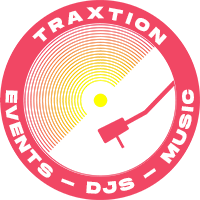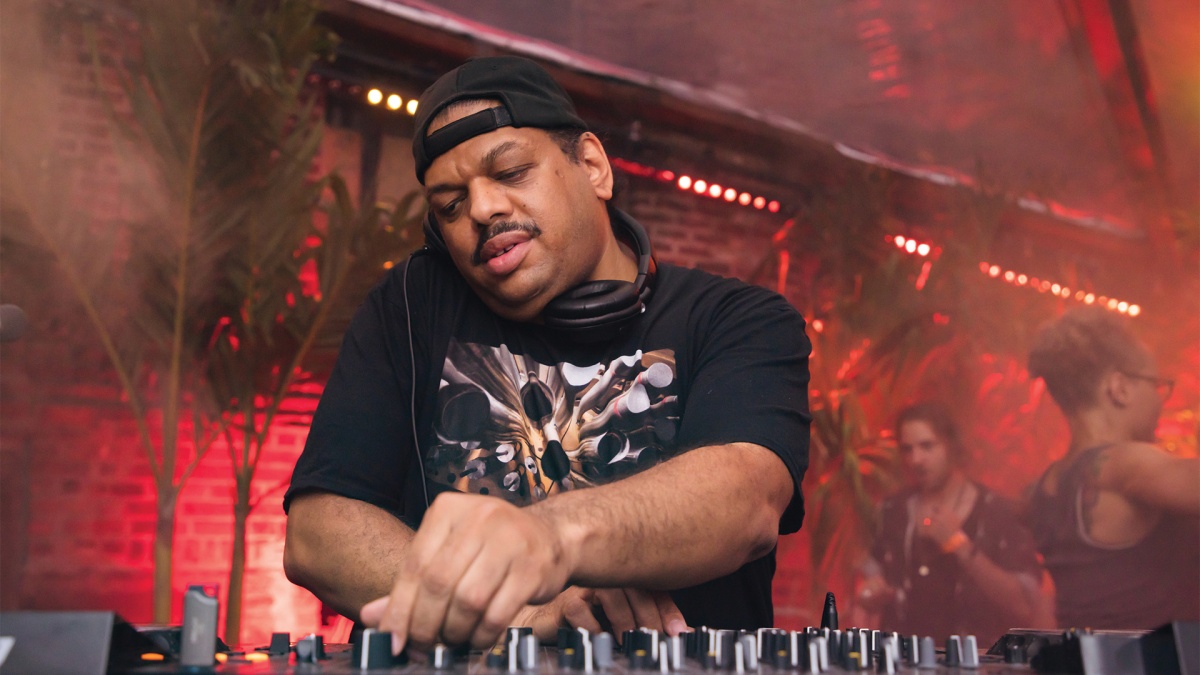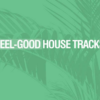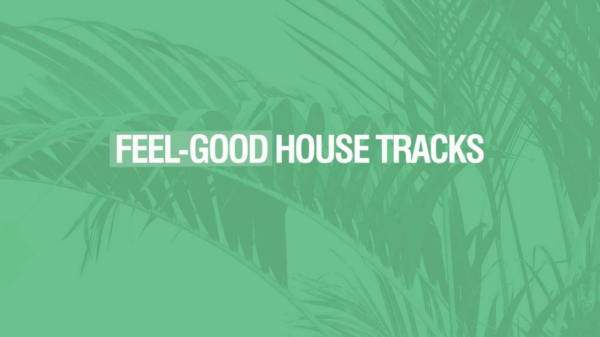For DJs with a packed touring schedule, gigging at one iconic club after another, finding the time to sit down in the studio can be nearly impossible. But when Kerri Chandler wanted to work on a long-delayed album, he hit on a solution: he’d transform those clubs into temporary studios, creating tracks attuned to each space. The result is ‘Spaces And Places’, and it’s some of his best work yet
“Sorry, it’s a little dark in here. I usually have club lighting on down here, like with rotating heads and stuff,” Kerri Chandler says, with a tone that suggests it might be normal to have a full light rigging in one’s abode. The DJ and producer, who’s been one of real-deal house music’s staunchest defenders for over three decades, is giving DJ Mag a Zoom tour of his home; the various shelves and closets that he’s leading us to could pass for exhibitions at a museum dedicated to the clubbing arts.
“I have every single version of the Technics SLs, SL-B1s all the way up to SL-5100s,” he declares, opening one pair of doors. There’s also a slew of flight cases, more than the average globe-trotting DJ would go through in a lifetime, for various turntables, reel-to-reels and mixers. Speaking of mixers, another closet opens and a bank of them appears, including a Pioneer that he’s retrofitted with rotary knobs. (Chandler, a dedicated tinkerer, works hand-in-hand with Pioneer, along with numerous other audio companies, to help develop products.) He proudly holds up a rare Clubman One-One mixer that belonged to his late father. Finally, he pulls out a hulking unit that looks more like a studio mixing board than a DJ mixer. It’s a machine he’s particularly proud to show off.
“This is a beast,” Chandler says. “It’s got a frequency range starting at 20 hertz, and it goes all the way up to 50,000. I mean, the reason I even bother with it was because I read something from Rupert Neve, who is my absolute hero. He just had a way with sound. And he just said, ‘22,000 kilohertz isn’t enough. You need to go all the way up to get that open sound.’ Right. That stuck with me.” Neve, who died in 2021, was a hugely influential electronics engineer who revolutionised the science of audio equipment; Chandler himself studied engineering in college. A fascination with both engineering, and the possibilities afforded by the mechanics and the power of sound, play a role in nearly everything he does, right up to his new album, ‘Spaces And Places’.
Chandler’s first LP in nearly 14 years, it is in part an ode to club systems and acoustics: over the course of several years, he recorded its 24 tracks at various venues he’s built up relationships with over his career, basically setting up temporary studios in spots like Paris’s Rex Club, London’s Ministry Of Sound, Amsterdam’s De Marktkantine and Brooklyn’s late, great Output in an attempt to capture the vibe and sonic character of each. Adding to the acoustic bounty, it was also recorded in Dolby Atmos, Dolby being another firm that Chandler’s worked with. The music on ‘Spaces And Places’ is also, as it happens, very Kerri-esque: though the tracks vary widely in texture and vibe, from sweet vocal numbers to sax-led party cuts to deep chuggers, they’re all defined, in varying degrees, by his trademark heavy kicks and indelible basslines.
Chandler’s love of big beats and bass can, perhaps, be traced back to a single night in Twin City, a roller rink in Elizabeth, New Jersey about 40 miles south of his hometown of East Orange, right next to Newark. Chandler, an avid skater — “I still have my skates” — was a regular there, and he recalls the DJ, whose name is lost to the sands of time, playing some incredible music. He remembers one night in particular.
“The first time I ever heard a breakdown that just drove me nuts was when he played ‘Is It In’ by Jimmy ‘Bo’ Horne,” Chandler recalls. “That thing broke down and was just like, ‘boom, boom boom boom, boom’ [imitating the song’s iconic low end]. I was like, ‘Oh my god, what is this bassline?’ I kept skating around, but I had to stop and just look up at the guy, like, ‘Wow! What the hell is that? I need that!’ It just kept building up, and the breakdown kept on coming back in. And the sound in that room — it was Richard Long,” he adds, referring to the famed club system designer most known from his handiwork at the Paradise Garage. “It had the subs and everything, so I was really hearing it.”
The next day he skedaddled over to East Orange’s Movin’ Skates, the precursor to Movin’ Records, the hugely influential shop and label run by Abigail Adams. Though ostensibly for skaters, the shop already was stocking a few records; Adams handed him a copy, and he headed home to give it a spin. The song still sounded great — but something was slightly amiss.
“It started with that bassline, and I’m like, ‘Wow, this is badass’,” Chandler says. “I looked for the break, that shit dropped, and I lost my mind. I was sitting in a chair, and I jumped up — there it is! But the break was no more than 16 bars! Okay, I’m gonna need two copies of this, and I’m gonna keep running it back. But then I realised, no — I’ll just use my dad’s tape machine, and I’ll just chop this thing up. I’ll just make this thing as long as I want it. And that’s where it started. I was making all these edits, making the break longer, that nobody else would have.”
And thus, an editor — a precursor to his career as a producer — was born. In reality, Chandler’s life was steeped in music long before that night at Twin City. His father, Joseph, was a respected local DJ — and he wasn’t the only one in the family. “Uncles, aunts, cousins. It was the family business, honestly,” Chandler says. Moreover, East Orange, next-door Newark and the surrounding towns were, and are, awash with music; soul legends like Mtume and Whitney Houston, hip-hop acts such as Naughty By Nature and Queen Latifah, and house producers like Blaze and Aly-Us all hail from the area.
“My mother used to babysit for Steve Washington [of the funk band Slave] when he was a kid,” Chandler says. “And my godfather was Meekaaeel,” he adds, referring to Meekaaeel Muhammad, who worked with Kool & The Gang and scores of other acts, “so I got to go to the studio a lot. They’d have everybody in there making records. I remember Third World being there. That was powerful. I learned so much just watching. I was like, ‘this is it. I want to do this’.”
Chandler’s biggest influence, though, was undoubtedly his father, Joseph Chandler, who ran a sound equipment company and with his partner Richard Davis had a weekly party at an unlikely venue, the Rallye Racquet Club in East Orange. “I don’t know how he talked them into it,” Chandler says. “It was literally a big racquet club, with two sets of tennis courts, with four courts on each one. They would set up the sound upstairs, and could get a good four or five hundred people up there. They’d have live bands as well, bands like Kool & The Gang and Surface.” He looks up the address on Google Maps. “It’s turned into some kind of big shipping company or some kind of manufacturing company. It’s a huge spot.”
“I got to go to the studio a lot. They’d have everybody in there making records. I remember Third World being there. That was powerful. I learned so much just watching. I was like, ‘this is it — I want to do this’.”
When his father was out of the house, Chandler surreptitiously made his first forays into DJing by honing his skills on his dad’s home setup and vinyl. One fateful night, thanks to a flat time, his father came home unexpectedly early, and young Kerri was busted. His exasperated father said something to the effect of “Okay, show me what you can do!” Chandler did as he was instructed — and before long, at age 13, he had a steady gig opening up at the Rallye Racquet Club. “And by the time I was 16 or 17 years old, I was just playing and playing and playing,” he says.
By 1986, he had played his way into a residency at Club America, a sister club to Newark’s famed Zanzibar, where Tony Humphries had begun his seminal residency after taking the reins from Hippie Torrales. “Club America was an incredible club, absolutely beautiful,” Chandler says. “I mean, it was a Richard Long soundsystem, the first time I’ve ever seen 30-inch woofers in a club wrapped around the wall. When we’d close the club, I would always walk over to Zanzibar and listen to Tony for the rest of the night, and then take my records and take a cab or bus home. And then do it all over again the next weekend.” He’d also fill in when Humphries was out of town. “I would have to, because nobody except me knew how to play on those Thorens,” he says, referring to the club’s belt-driven turntables.
Chandler had already fallen in love with house music, originally via a track he’d heard a DJ playing off reel-to-reel at the racquet club: the instrumental mix of Russ Brown’s 1986 release on Jump Street, ‘Gotta Find A Way’. “I’d never heard anything like that before,” Chandler says. “It sounded like it was on a Casio, and had no words or anything. I was like, ‘what is that?’ It blew my mind — ‘I mean, you can actually make a song like that and play it?’”
He’d been making his edits, and had been producing a bit of rap as well — but still, the thought of producing house hadn’t yet entered his mind. That was about to change, sadly due to the harrowing night when his girlfriend Tracy was murdered by a jealous ex while celebrating her birthday at Zanzibar. “Tracy, she always loved house music,” Chandler says. “She’d say how therapeutic it was to her. After that, that’s when I really, really started getting into house music, because I couldn’t get her off my mind. I thought, ‘Okay, I’ve never made a house record before. I’m going to try it’ — although I had not a clue of what I was doing. I just felt like I needed to get it off my chest. I know how much she loved it.” The result was the now-classic ‘Get It Off’, eventually released on Chandler’s 1990 debut, the ‘Super Lover’ EP.
“There’s a part of that track,” Chandler says, “where it just sounds like the needle gets ripped off of the record — then it just starts going, ‘Get it off, get it off, set it loose, set it loose’. That’s me telling myself, like I need to get this off of my mind, I need to set this feeling loose — I need to let it go. Making that record, I just felt better. I realised that this is what I need to do, just express my life as a diary on records. And that’s all I’ve done ever since. Every single record I have ever made since then has been a part of my life story.”
The release of ‘Super Lover’ marked a turning point in Chandler’s career. “The next thing I knew, I was all over the place,” Chandler says. “I was DJing with the whole Wild Pitch crew, playing with people like Bobby Konders, Basil [Thomas] and Camacho, playing at like 1018, Red Zone, Tunnel and Nell’s, meeting people like Pal Joey — the whole New York thing. I was everywhere.” [Text Wrapping Break]By 1991, he was international, via his first overseas gig at Ministry Of Sound. “Which scared the living crap out of me,” he says. “I mean, it was the first time I ever flew in an airplane!” It’s safe to say that he’s accumulated a few frequent flyer miles in the years since, not to mention literally hundreds of productions and remixes, many released on his own Madhouse and Kaoz Theory labels.
A sense of place has long been important in Chandler’s production methodology, and the roots of ‘Spaces And Places’ can be traced back to one of New York clubbing history’s iconic venues. In 1991, DJs and industry figures Merlin Bobb, Timmy Regisford and Freddy Sanon were preparing to open Club Shelter at 6 Hubert Street, the same address that once housed the groundbreaking Area and would later be the home of Danny Tenaglia under the names Arc and Vinyl.
“Merlin Bobb says, ‘Kerri, we are going to open this club, with Timmy as resident,” Chandler says. “‘You can play there if you want. We just got the system.’ And it was another Richard Long system, and the space was incredible. I was like, ‘Oh, my gosh, yeah, I’d love to be a part of it.’
“He asked me to make a theme song for the club. ‘What do you want me to do?’ I said. ‘Just make a really raw track that represents what you think the club is going to be.’ So I went to the club a few times, to listen and watch and get the vibe of it. I said, ‘I’ll tell you what, I’m going to actually make the track ‘The Shelter’ at The Shelter! Let me bring some stuff in here, see how the room is EQed, and tune everything so it perfectly matches the club. And it will end up sounding better than anything else you can play in the club. He was like, ‘Oh, wow, let’s do it!’”
Credited to Gate-Ah, ‘The Shelter’ was released on the Shelter Records label. If you’re old enough, and if you lived in New York City in the early ’90s and went to The Shelter, and if you were fortunate enough to have heard Regisford drop the tune at five in the morning, you’ll know he was right. “Making ‘The Shelter’ was so fun, it was crazy,” Chandler says. “Ever since then, I need a club system wherever I’m working at. It just has to be that way. It makes so much logical sense. I’m making house records for clubs, and monitors just aren’t gonna cut it, because things sound so much different when they’re louder.”
The concept behind ‘Spaces And Places’ was born of necessity. As with many ideas, it was a deadline that provided the spark. A Kate Simko remix was due, but he found himself, as per usual, on the road, and asked for more time to complete it. The answer, as Chandler tells it: “‘No, no, we need it now. You promised us!’ ‘Okay, I have my laptop with me. I have a controller.’ There was this club in Munich called Bob Beaman with an amazing system. It was like a studio in there, and I’m like, ‘Okay, this works’. I asked David [Muallem], a friend of mine who was the resident there, ‘Can I use the club to finish this remix?’ He said yes. I took the vocal and I started making the song up in that club. I thought, ‘okay, this works!’
“A couple of years go by,” he continues, “and I’m thinking, ‘I’m never gonna get in the studio to do this album that I really want to do. What if I contacted a lot of these clubs and did the same thing I did in Munich? I’ll bring my computer and I’m going to bring these direct boxes, I’m gonna make convolutions of the room, I’m gonna do this, this, this, this and this.’ Every single club bent over backwards for me to do it. And here I am, 24 clubs later.”
Chandler has personal experience with each of those clubs — each of them is among his favourite places to ply his trade. There are stories behind each of the productions; ‘Subbie’, the tune he recorded in Glasgow’s venerable Sub Club, provides a good example of his methods. “There are subwoofers underneath the actual dancefloor,” Chandler explains. “I set my equipment up in the middle of the room, and I tuned every sound to what that club does. The ceiling there is really low, so I had this idea for the bassline, to use the resonance in the room. I’d find what would make the ceiling ring. I’ll have a bass note and the corner of the ceiling would rattle, and I hit another note and the top rafters over there would do it, and there’s another note that will hit right in the middle of the club. Each note would rattle different parts of the club, for each note of the song, and I captured that.”
There’s more. “There’s a train station right behind it,” he says, “and you can hear those trains rumbling from inside of the club. You can feel the room shaking. So I went outside and I recorded the train going by, and I put that in the song as well. The way I panned it, the train feels like it’s actually coming through the room left to right. There’s also a bingo hall near the club, and if you go outside, you can hear the bingo caller, a woman on a loud horn. I took whatever she was saying, went back down into the Sub Club, and chopped it all up so that she’s actually singing the notes in the song — and every time she says ‘jackpot’, something in the song changes.” There’s yet more, but you get the idea — Chandler did not half-ass this project. “No, it was dead serious,” he says with a laugh. “It’s my engineering hat, but it was so much fun.”
“I set my equipment up in the middle of the room, and I tuned every sound to what that club does. I’d use the resonance in the room. I’d find what would make the ceiling ring.”
It’s a rare person who gets a kick out of engineering, but science has been a part of Chandler’s life since well before he started piecing together edits on his father’s reel-to-reel. For instance, when he talks about his youthful fascination with horn antenna at Bell Labs in Holmdel, New Jersey, where scientists first discovered cosmic microwave background radiation and thus evidence for the Big Bang Theory, there’s still wonderment in his voice.
“I was so fascinated by this thing,” he says. “I just had to know more about it. My aunt was a dean at Princeton, and for my birthday, she took me to see it. I was lost for words. I couldn’t even believe that I was looking at it. I was almost like in tears, I was so fascinated. I said, ‘This is what I want to do. I want to be a scientist.’” Happily for lovers of true-school house, music intervened — but science is never far away, and it goes deeper than analysing acoustics in nightclubs or helping to develop gear.
Chandler’s on the advisory boards of NASA, SETI (Search For Extraterrestrial Intelligence) and METI, and has actually sent music into space — specifically, ‘Track 1’ from 1993’s ‘Atmosphere’ EP. The favour may have been returned, according to Chandler. “The album cover of ‘Spaces And Places’ is actually a map of fast radio bursts,” Chandler explains. “All those white little dots are where we actually heard a sound back from. There’s one place in particular that, every six weeks, we keep getting signals back from. And I kid you not,” he adds, “it actually sounds like house.” Apparently, Chuck Brown was right — house music really is a universal language.
Want more? Check out DJ Mag’s recent feature from Ben Cardew, on how Mr. Fingers’ ‘Ammnesia’ changed the house music experience forever
Bruce Tantum is DJ Mag’s North American editor. You can follow him on Twitter @BruceTantum
Thrust Publishing Ltd, Unit 3, 30-40 Underwood Street, London, N1 7JQ, United Kingdom. Tel: +44(0)7940488008







